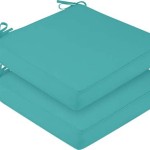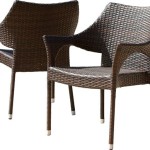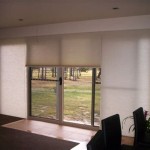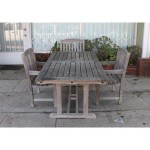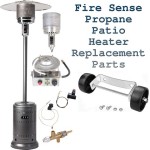Plastic Straps for Patio Chairs: A Comprehensive Guide
Plastic straps, also known as vinyl straps or webbing, are a common material used in the construction and restoration of patio furniture, particularly chairs, chaise lounges, and sofas. They offer a durable and relatively inexpensive seating solution compared to other materials like wood, metal, or woven fabrics. This article explores the characteristics, advantages, maintenance, and replacement of plastic straps in patio furniture, providing a comprehensive understanding of their role in outdoor seating.
The use of plastic straps in patio furniture became popular due to their resistance to the elements. Unlike traditional fabrics, plastic straps do not readily absorb water, minimizing the risk of mold and mildew growth. They are also highly resistant to fading and cracking caused by prolonged exposure to sunlight, making them ideal for outdoor use. The flexibility of the material also contributes to the comfort of the seating, providing a degree of give and support.
Plastic straps are typically made from polyvinyl chloride (PVC) with added plasticizers and UV inhibitors. The plasticizers enhance the flexibility and pliability of the PVC, while the UV inhibitors protect the material from degradation caused by ultraviolet radiation. The thickness and width of the straps can vary depending on the design and intended use of the furniture. Thicker and wider straps generally offer greater support and durability.
Key Characteristics and Advantages of Plastic Straps
Plastic straps possess several characteristics that make them a suitable material for patio furniture. These attributes contribute to their widespread adoption and continued use in outdoor seating applications.
Durability and Weather Resistance: One of the primary advantages of plastic straps is their durability and resistance to weathering. PVC is inherently resistant to water, preventing the material from rotting or decaying like natural fibers. Additionally, the UV inhibitors incorporated into the plastic compound protect the straps from sun damage, preventing fading, cracking, and embrittlement. This combination of water resistance and UV protection ensures that the straps can withstand prolonged exposure to the elements, extending the lifespan of the furniture.
Comfort and Support: Plastic straps offer a comfortable seating experience due to their inherent flexibility. The straps provide a degree of give, conforming to the body's contours and providing support without feeling overly rigid. This flexibility allows for a more relaxed and enjoyable seating experience compared to hard surfaces like wood or metal. The spacing and tension of the straps can also be adjusted to further customize the level of support and comfort.
Ease of Maintenance: Plastic straps are relatively easy to clean and maintain. Dirt, debris, and spills can typically be removed with a simple solution of soap and water. The non-absorbent nature of the PVC prevents stains from penetrating the material, making cleaning quick and efficient. Regular cleaning helps to maintain the appearance of the straps and prevent the buildup of mold and mildew, further extending their lifespan. Periodic inspection for damage, such as cracks or tears, is also recommended to ensure the integrity of the furniture.
Wide Range of Colors and Styles: Plastic straps are available in a wide variety of colors and styles, allowing for customization and aesthetic appeal. The color options range from neutral tones like white, beige, and brown to vibrant hues like red, blue, and green. The straps can also be embossed or textured to create different visual effects. This versatility allows manufacturers and consumers to create patio furniture that complements their outdoor décor and personal preferences.
Cost-Effectiveness: Compared to other materials used in patio furniture construction, plastic straps are relatively cost-effective. PVC is a readily available and inexpensive plastic, making it an economical choice for manufacturers. The ease of manufacturing and installation also contributes to the affordability of plastic strap furniture. This cost-effectiveness makes it an attractive option for consumers looking for durable and comfortable outdoor seating at a reasonable price.
Maintenance and Cleaning of Plastic Straps
Proper maintenance is crucial for extending the lifespan and preserving the appearance of plastic straps. Regular cleaning and inspection can prevent damage and ensure the continued functionality of the patio furniture.
Regular Cleaning: The frequency of cleaning will depend on the environment and usage of the furniture. In general, cleaning the straps every few weeks is recommended. A simple solution of mild soap and water is usually sufficient for removing dirt, debris, and spills. A soft-bristled brush can be used to gently scrub the straps, paying particular attention to areas with heavy soiling. Avoid using harsh chemicals or abrasive cleaners, as these can damage the plastic and fade the color. After cleaning, rinse the straps thoroughly with clean water and allow them to air dry before using the furniture.
Mold and Mildew Removal: In humid environments or areas with limited sunlight, mold and mildew may grow on the plastic straps. To remove mold and mildew, a solution of diluted bleach can be used. Mix one part bleach with ten parts water and apply the solution to the affected areas. Allow the solution to sit for a few minutes before scrubbing with a soft-bristled brush. Rinse the straps thoroughly with clean water and allow them to air dry completely before using the furniture. It is important to wear gloves and eye protection when working with bleach to avoid skin and eye irritation.
Protection from the Elements: While plastic straps are designed to withstand the elements, prolonged exposure to harsh weather conditions can still cause damage. To protect the furniture, consider covering it with weatherproof covers when it is not in use. This will shield the straps from direct sunlight, rain, and snow, extending their lifespan and preventing fading or cracking. Storing the furniture indoors during the off-season is also recommended, especially in regions with harsh winters.
Inspection for Damage: Regularly inspect the plastic straps for signs of damage, such as cracks, tears, or fraying. Early detection of damage can prevent further deterioration and allow for timely repairs. If a strap is damaged, it should be replaced as soon as possible to maintain the structural integrity of the furniture. Ignoring damage can lead to more extensive repairs and potentially compromise the safety of the seating.
Replacing Damaged Plastic Straps
Replacing damaged plastic straps is a relatively straightforward process that can be done with basic tools and materials. Properly replacing the straps restores the functionality and appearance of the patio furniture.
Gathering Necessary Tools and Materials: Before starting the replacement process, gather the necessary tools and materials. These typically include a flathead screwdriver or putty knife, a measuring tape, new plastic straps, rivets or clips (depending on the furniture's design), and a heat gun or hairdryer (optional). Ensure that the new plastic straps are of the same width and thickness as the original straps to ensure a proper fit. It is also important to choose a color that matches the existing straps to maintain the aesthetic consistency of the furniture.
Removing the Old Straps: Use a flathead screwdriver or putty knife to carefully pry off the rivets or clips that secure the old straps to the frame. If the rivets or clips are difficult to remove, try using a lubricant to loosen them. Once the fasteners are removed, pull the old straps out of the frame's slots or channels. Discard the old straps and fasteners properly.
Measuring and Cutting the New Straps: Measure the distance between the attachment points on the frame where the new straps will be installed. Add a few extra inches to this measurement to allow for stretching and tightening the straps. Use a sharp utility knife or scissors to cut the new straps to the correct length. It is better to cut the straps slightly longer than necessary, as they can always be trimmed later. A heat gun or hairdryer can be used to soften the plastic straps before cutting, making them easier to work with.
Installing the New Straps: Insert one end of the new strap into the corresponding slot or channel on the frame. Use a rivet or clip to secure the strap in place. Stretch the strap tightly across the frame to the opposite attachment point. Use pliers to help stretch the strap if necessary. Secure the other end of the strap with another rivet or clip. Ensure that the strap is taut and evenly spaced to provide adequate support and comfort. Repeat this process for all of the remaining straps.
Finishing Touches: Once all of the new straps are installed, inspect the furniture to ensure that all of the straps are properly secured and evenly spaced. Trim any excess material from the ends of the straps. If any rivets or clips are loose, tighten them or replace them with new ones. Clean the furniture with soap and water to remove any dirt or debris that may have accumulated during the replacement process. Allow the furniture to dry completely before using it.
By understanding the characteristics, advantages, maintenance, and replacement procedures related to plastic straps, individuals can effectively maintain and repair their patio furniture, ensuring its longevity and continued enjoyment. The information presented provides a comprehensive overview of this common material used in outdoor seating, enabling informed decisions regarding its care and upkeep.

Vinyl Rolls Straps Patio Furniture Rehab

Restrapping Patio Furniture Vinyl Strap Replacement Chairs Lounges

How To Install A Single Wrap Vinyl Strap Youtube

Angel Sar 20 Ft L X 2 In W Vinyl Replacement Straps With Rivets For Patio Chairs Dark Green Qbaq3763 The Home

Diy How To Replace Vinyl Straps On Your Patio Chairs

Patio Strap Furniture Outdoor Straps

How To Install A Single Wrap Vinyl Strap

Commercial Vinyl Strap Pool Furniture Picnic

How To Replace Cross Straps

Commercial Vinyl Strap Pool Furniture Patio Leisure
See Also

